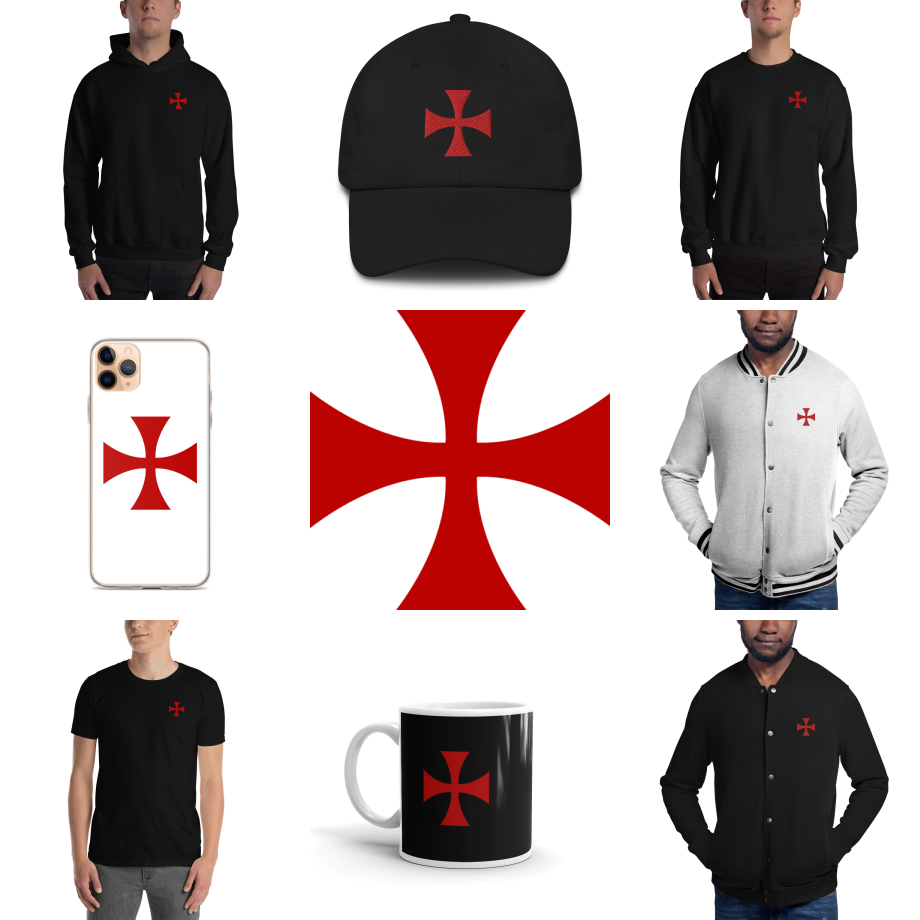The Two Pillars
Feature Image – The Temple Mount – considered to be the premier holy site in Judaism as it is the place where the First and Second Temples stood. By Andrew Shiva
The Chaldeans broke up the bronze columns of the House of the Eternal, the stands, and the bronze tank that was in the House of the Eternal, and they carried all the bronze away to Babylon (Jeremiah 52 : 17).
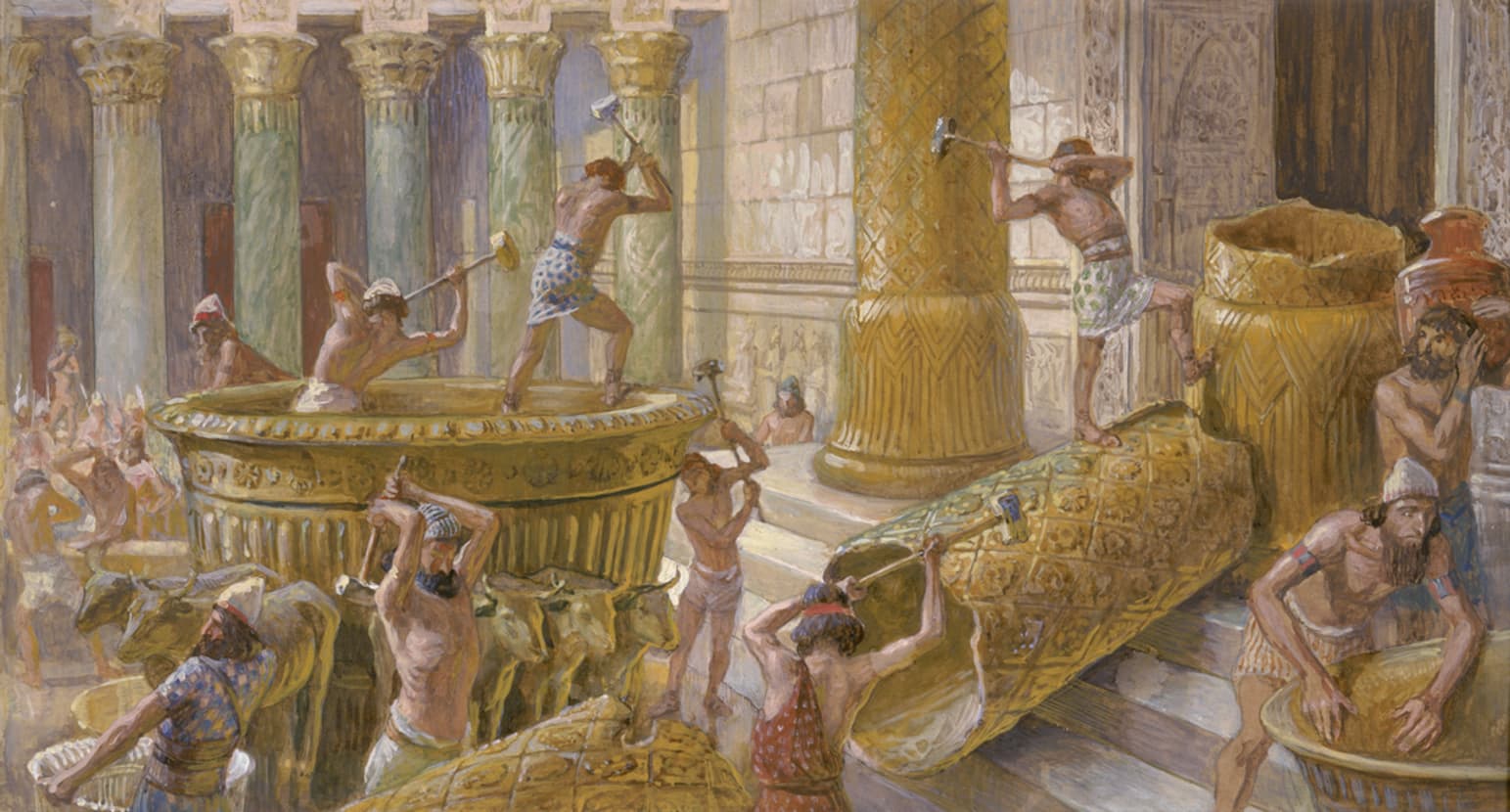
The Chaldees Destroy the Brazen Sea – James Jacques Joseph Tissot (French, 1836-1902) and followers.
IMAGE LINKED: Believed to be in the Public Domain. From the jewish museum. Attribution 4.0 International (CC BY 4.0)
King Jehoiachin of Judah rebelled against the Babylonians in 597 BCE. King Nebuchadnezzar besieged Jerusalem, took it and exiled a large part of its population to Babylon.
He placed Jehoiachin’s uncle Mattaniah on the throne, who was subsequently renamed Zedekiah.
Eleven years into his reign, Zedekiah rebelled against the Babylonians, and this time the response was even harsher: after a dreadful siege of 18 months – some say 30 months – the ‘Chaldeans’ took Jerusalem, ‘burned the House of the Eternal, the king’s house and all the houses of Jerusalem’ (2 Kings 25: 9) and left only the ‘poorest of the land to be vine dressers and ploughmen’.

Nebuchadnezzar and Zedekiah By Guillaume Rouille – Promptuarii Iconum Insigniorum
IMAGE LINKED: wikimedia Attribution 4.0 International (CC BY 4.0)
This catastrophe of 586 BCE will be seconded only by the second fall of Jerusalem in 70 CE and the second – and last – destruction of the Temple.
The new rulers of Babylon, the Persians (from 539 BCE), allowed the Judeans to return to Jerusalem and to build a second Temple, completed in 516/5 BCE.
According to Hebrew Scriptures, the First Temple was built by Solomon and completed in 957 BCE.
It was conceived as an abode for the Ark, that had accompanied the Children of Israel in the desert and during the conquest of the land.
The Temple was designed as a substitution for the Mishkan, the Tabernacle, or ‘Tent of Meeting’, which sheltered the Ark.

The tabernacle, engraving from Robert Arnauld d’Andilly’s 1683 translation of Josephus.
IMAGE LINKED: wikimedia Attribution 4.0 International (CC BY 4.0)
Even though the Second Temple was supposed to replace the first, some notable differences existed between them:
The Ark of the Covenant, and the two tablets of Covenant it contained went missing after the destruction of the First Temple, and no one knows its fate with certainty. Its place is left empty in the second Temple, only remembered in the Holy of Holies.
The Kodesh Kodashim, ‘Holy of Holies’, now empty in the second building, is hidden behind thick curtains, and nobody is allowed in, except the High Priest, once a year, who says aloud the hidden name of God.
The two columns were broken by the Chaldeans (Jeremiah 52:17) and were not rebuild by Zerubabbel.

Moses and Joshua bowing before the Ark, painting by James Tissot, c. 1900
IMAGE LINKED: wikimedia Attribution 4.0 International (CC BY 4.0)
Early Christians and Rabbinic Jews had a immediate experience of the second Temple, and yet, Hebrew Scriptures, the New Testament, and Rabbinic literature referred mainly to the Temple of Solomon, whilst they had in their mind its blueprint, the Temple of Solomon. It is no surprise therefore that Freemasonry has focused on the first building.
The mention of the two pillars as components of the First Temple appears in two parallel texts: 1 Kings 7: 21 and 2 Chronicles 3: 17, the latter being more recent than the former [1].
The Book of Kings reports, ‘He [Hiram of Tyre] set up the pillars in the vestibule of the temple – le’ulam ha-heykhal; he set up the right pillar and called its name J***, and he set up the left pillar, and called its name B***’ (1 Kings 7:21).
A parallel text in the Second Book of Chronicles says, ‘He [Hiram of Tyre] set up the pillars before the Temple – al peney ha-heykhal…he called the name of that on the right hand J***, and the name of that of the left B***’ (2 Chronicles 3:17).
Rabbi Raymond Apple, an Australian Masonic scholar explains, ‘Midrash Tadshe, a pseudepigraphic work traditionally ascribed to the second-century tanna Pinchas ben Ya’ir, attaches a cosmic symbolism to the Sanctuary, connecting the pillars with the moon and the sun.
According to this midrash, J*** represents the moon, since the Psalmist affirms: David’s throne ‘shall be established [yikkon] forever as the moon’ (Ps. 89:38); while the moon determines the festivals for Israel, as it is written, ‘He appointed the moon to mark the seasons’ (Ps. 104:19). B*** represents the sun which comes forth in power and strength, as it is written, ‘He [the sun] rejoices like a strong man to run his course’ (Ps. 19:6). [2]

Mystical alchemical diagram of B & J pillars of the Temple of Jerusalem, interpreted as cosmic principles.
IMAGE LINKED: wikimedia Attribution 4.0 International (CC BY 4.0)
Placed at the entrance of the Temple, B & J emphasize the strength and the stability of the Davidic monarchy.
Unlike their use in lodges, their names described mainly their qualities. Freemasonry read them literally, as two characters.
Ruth marries B***; their son, Obed, was King David’s grandfather. B*** was the ancestor of King Solomon. J*** is a minor biblical figure, a son of Simeon, who was among the 70 souls that emigrated to Egypt with Jacob (Genesis 46: 10).
However, if one follows this Midrashic tradition, there is a clear connection between the presence of the sun and the moon in the lodge and their association with the two pillars, even though the First Degree tracing board separate them. This tradition, more than a meditation on their names, is the link between Jewish sources and their Masonic interpretation.
One may wonder, why did these pillars become part of the architecture of the First Temple, and why did they disappear from the Second?
The pillars were free-standing and did not seem to have supported any roof or portico.
In a recent article, Rabbi Raymond Apple evokes various theories about their role and function [3].
It might also be possible that these columns had the same function as the pylons in the Egyptian temples. These were two massive structure at the entrance of some temples in Egypt, and their hieroglyph, akhet, was a description of two hills between which the sun rose and set [4].
The temple axis represented the daily route of the sun, and the Temple of Solomon had the same East-West orientation.
Hiram of Tyre was probably influenced in his craftsmanship by the neighbouring great culture of Egypt. These pylons were frequently paired with obelisks, closely associated with the sun god Ra.
Depiction of a 3rd-century (AD) glass bowl which depicts Solomon’s Temple. B & J are the detached black pillars shown on either side of the entrance steps. Image from Encyclopaedia Biblica, 1903.
IMAGE LINKED: wikimedia Attribution 4.0 International (CC BY 4.0)

Akhet, hieroglyph meaning ‘horizon’ or ‘the place in the sky where the sun rises’
IMAGE LINKED: wikimedia Attribution 4.0 International (CC BY 4.0)
Located at the entrance, the two columns played an important bridging role between the profane domain, and a sacred space, with a gradual level of holiness.
When the second Temple was built, some five centuries later, the Egyptian influence had receded, which may explain why the new architects did not see the relevance of this piece of the previous Temple.
And yet, as the development of Freemasonry reveals, Egyptian influences on the Craft are not to be underestimated. An element which was considered as peripheral for the architects of the Second Temple retained its prominence in Freemasonry.
It is now possible to draw some conclusions, and ponder why these pillars became so central in Freemasonry.
The Masonic narrative flourishes in the Temple of Solomon, and the Temple rebuilt by Zerubbabel is mentioned only in a higher degree of the Ancient and Accepted Scottish Rite (15: Prince of Jerusalem), and in the York Rite, the Holy Royal Arch of Jerusalem.
The position of the pillars in the lodge has become a matter of contention between various workings. It is partly due to the ambiguity of the biblical text.
Biblical sources suggest that the columns stood near the entrance of the Temple. We have seen earlier that in Biblical sources, J*** is located at the left of the entrance, and B*** at the right.
This begs the question, from which direction does the spectator look at these pillars? Mishnah Sukkah 5:4 describes an aliyah, an ascent to the Temple at the end of the festival of Sukkot.
Worshippers would go up to the Temple, and ‘when they reached the gates which lead out to the east, they turned their faces from east to west’, in order to prevent any suspicion that they were worshipping the sun.
Therefore, the Jewish view is that they were looking inside out, placing J*** to the south, and B*** to the north.
In his book, René Désaguliers explains further that the location of the brazen sea confirms that ‘right is south and left is north [5].
The Ancient and Accepted Scottish Rite has kept this order, and it takes the perspective of the RWM who looks towards the west.
The French Rite, on the contrary, has inverted both columns, placing the emphasis on the one who enters the lodge. It is a question of perspective, and not who is right and who is wrong [6].
In any event, B & J, whose names are the s…d w…s of the First and the Second Degree mark the entrance of the lodge.
One does not walk at one’s wish in a sacred place. Moves are codified, they follow a certain pattern, and the two pillars are the threshold between the sacred and the profane.
Their names explain that Freemasonry is firmly established on solid grounds, and when one enters such a space, one has to be aware that here begins a different, higher dimension.
[Publishers Note: this article has been edited in order not to violate my obligation]
Footnotes
References
[1] There is a whole debate in modern biblical scholarship about the sources these verses come from. Kings is part of Deuteronomist History and was compiled by the time of the Exile in the 6th century BCE, and Chronicles is more recent, probably Hellenistic.
[2] https://www.oztorah.com/2014/11/pillars-of-the-temple-jbq/#.XvoQnChKiUl
[3] Raymond Apple, “Pillars of the Temple”, in: Jewish Bible Quaterly, vol. 42, n°4, 2014, pp. 221-228.
[4] Cf. Toby Wilkinson, The Thames and Hudson Dictionary of Ancient Egypt, Thames & Hudson, London, 2005, p. 195.
[5] René Désaguliers, Les deux grandes colonnes de la franc-maçonnerie, 2nd édition, Dervy, Paris, p. 14.
[6] For an extensive discussion on the inversion of both pillars, see Désaguliers, op. cit., Chapter III.
Article by: Rene Pfertzel
Rene Pfertzel was initiated in 1992 in Lodge Ouverture et Fraternité 1540, in the French Federation of the International Co-Masonry, Le Droit Humain.
After a gap of over 15 years, he re-joined Le Droit Humain in the British Federation, Lodge Hermes 20.
He has a PhD in Biblical Studies, and after a career as a history teacher in France, he retrained to become a Rabbi in London, and stayed in the United Kingdom ever since. He serves a Progressive community in Surrey.

Recent Articles: symbolism
 Legends and Symbols in Masonic Instruction Explore the significance of Masonic legends and symbols in this insightful post. Discover how Freemasonry imparts wisdom through allegorical narratives and emblematic imagery, revealing profound moral and philosophical lessons. Unveil the deep connections between Masonic teachings and the broader quest for understanding life’s fundamental questions. |
 Discover the mystical significance of the number 33. From its mathematical marvels and artistic influence in numerology to its esteemed place in Freemasonry, delve into the history and power of this master number. Explore why 33 holds such profound meaning in various spiritual and philosophical traditions. |
 The Practice of Freemasonry - P1 Embark on a transformative journey with Freemasonry, where the exploration of your Center unlocks the Perfect Ashlar within. Through the practices of Brotherly Love, Relief, Truth, and Cardinal Virtues, discover a path of enlightenment and self-improvement. Embrace the universal creed that binds us in the pursuit of our true essence. |
 Discover the fascinating history and significance of the Warrant of Constitution within Freemasonry. Unveil the evolution of this crucial authorization, its role in legitimizing Lodges, and its lasting impact on the global brotherhood of Freemasons. Explore the intricate link it provides between tradition and modern practice. |
 Freemasonry: Unravelling the Complexity of an Influential Organization Mysterious and captivating, Freemasonry has piqued the interest of seekers and skeptics alike. With its intricate blend of politics, esotericism, science, and religion, this enigmatic organization has left an indelible mark on society. Prepare to delve into the secrets of Freemasonry and unlock its hidden depths. |
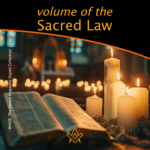 Unlocking the Mysteries of Freemasonry: In the hallowed halls of Freemasonry, a powerful symbol lies at the heart of ancient rituals and teachings—the Volume of the Sacred Law. This sacred book not only guides the spiritual and moral journey of Freemasons but also serves as a beacon of universal wisdom and enlightenment. |
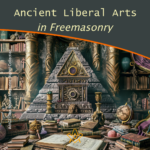 The Ancient Liberal Arts in Freemasonry Embark on a journey of self-improvement and wisdom with Freemasonry's guiding principles. Ascend the winding stairs of moral cultivation, analytical reasoning, and philosophical understanding. Embrace arithmetic's mystical properties and geometry's universal truths. Let the harmony of the universe inspire unity and growth. Discover the profound, hidden knowledge in Freemasonry's path to enlightenment. |
 Initiation rituals around the world are filled with fascinating elements and different images. One of them is that of darkness. When societies speak of darkness, they often mean a lack of knowledge, a lack of choice, or a symbol of evil. During initiation rituals, darkness is used to represent the initiate's lack of knowledge about the world, society, and initiation in general. It can also represent the initiate's inability to make a choice or endure a situation. Whether you have participated in an initiation rite or not, the meaning of darkness remains an intriguing concept worth exploring. Initiation rituals around the world are filled with fascinating elements and different images. One of them is that of darkness. When societies speak of darkness, they often mean a lack of knowledge, a lack of choice, or a symbol of evil. During initiation rituals, darkness is used to represent the initiate's lack of knowledge about the world, society, and initiation in general. It can also represent the initiate's inability to make a choice or endure a situation. Whether you have participated in an initiation rite or not, the meaning of darkness remains an intriguing concept worth exploring. |
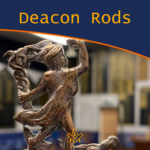 Masonic Deacon rods potentially trace their origins to Greek antiquity, symbolically linked to Hermes' caduceus. As Hermes bridged gods and mortals with messages, so do Masonic Deacons within the lodge, reinforcing their roles through ancient emblems. This connection underscores a profound narrative, weaving the fabric of Masonic rites with the threads of mythological heritage, suggesting the rods are not mere tools but bearers of deeper, sacred meanings that resonate with the guardianship and communicative essence of their divine counterpart, Hermes, reflecting a timeless lineage from myth to Masonic tradition. |
 The biblical pillars erected by Solomon at the Temple's porch, hold a profound place in history. These brass behemoths are not mere decorations; they are symbols of strength, establishment, and divine guidance. Explore their fascinating construction, dimensions, and the deep meanings they carry in both biblical and Masonic contexts. |
 Unlocking the Mind's Potential: Dive deep into ground breaking research revealing how simple daily habits can supercharge cognitive abilities. Discover the untapped power within and redefine your limits. Join us on this enlightening journey and transform your world! |
 Dive deep into the symbolic importance of the trowel in Masonry, representing unity and brotherly love. From its historical roots in operative masonry to its significance in speculative masonry, this article explores the trowel's multifaceted role. Discover its connection to the sword, the story of Nehemiah, and the Society of the Trowel in Renaissance Florence. Unravel the layers of meaning behind this enduring Masonic symbol. |
 Symbolism of The Builder's Jewel Batty Langley's "The Builder’s Jewel" (1741) is a visual masterpiece of Masonic symbolism, showcasing Langley's deep understanding of Freemasonry. The frontispiece highlights key symbols like the three pillars and the legend of Hiram Abiff, emphasizing Langley's dedication to Masonic traditions and teachings. |
 Unveil the mystique of the colour blue in Masonic symbolism. A hue evoking universal friendship and benevolence, its roots span ancient cultures, infusing Freemasonry's core values. This article explores blue's profound significance, guiding Freemasons towards wisdom and spiritual enlightenment. Discover the fascinating journey of this universal symbol. |
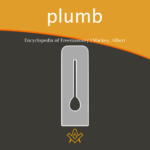 Discover the intriguing world of the plumb in Masonic symbolism with our in-depth analysis. Uncover its rich history, moral teachings, and significance in Freemasonry, guiding members on their path to truth, integrity, and justice. Immerse yourself in the captivating power of this symbol that shapes lives within the brotherhood. |
 Unlock the mysteries of Freemasonry with 'The Key,' a profound Masonic symbol. This seemingly simple instrument holds a deeper meaning, teaching virtues of silence and integrity. Explore its ancient roots, from Sophocles to the mysteries of Isis, and discover how it symbolizes the opening of the heart for judgment. |
 Unlock the secrets of the Freemasonry with The Blazing Star - a symbol that holds immense significance in their rituals and practices. Delve into its history, meaning and role in the different degrees of Freemasonry with expert insights from the Encyclopedia of Freemasonry by Albert Mackey. Discover the mystique of The Blazing Star today! |
 There is no symbol more significant in its meaning, more versatile in its application, or more pervasive throughout the entire Freemasonry system than the triangle. Therefore, an examination of it cannot fail to be interesting to a Masonic student. Extract from Encyclopedia of Freemasonry by Albert Mackey |
 The Hiramic Legend and the Myth of Osiris Hiram Abiff, the chief architect of Solomon’s Temple, is a figure of great importance to Craft Freemasonry, as its legend serves as the foundation of the Third Degree or that of a Master Mason. He is the central figure of an allegory that has the role of teaching the Initiate valuable alchemical lessons. Although his legend is anchored in biblical times, it may have much older roots. |
 This rite of investiture, or the placing upon the aspirant some garment, as an indication of his appropriate preparation for the ceremonies in which he was about to engage, prevailed in all the ancient initiations. Extract from The Symbolism of Freemasonry by Albert G. Mackey |
 The All-Seeing Eye of God, also known as the Eye of Providence, is a representation of the divine providence in which the eye of God watches over humanity. It frequently portrays an eye that is enclosed in a triangle and surrounded by rays of light or splendour. |
 What's in a Word, Sign or Token? Why do Freemasons use passwords, signs, and tokens? As Freemasons we know and understand the passwords, signs and tokens (including grips), which are all used a mode of recognition between members of the fraternity. |
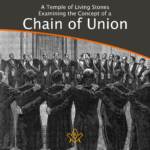 A Temple of Living Stones: Examining the Concept of a Chain of Union What are the origins of the Chain of Union? And how did they come about ? The answers may surprise some members as W Brother Andrew Hammer investigates, author of Observing the Craft: The Pursuit of Excellence in Masonic Labour and Observance. |
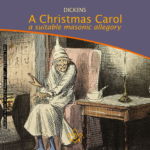 One of the best loved stories for the festive season is ‘A Christmas Carol’. A traditional ghost story for retelling around the fire on a cold Christmas Eve, it is a timeless classic beloved by those from all walks of life. Philippa explores the masonic allegory connections… |
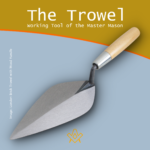 The Trowel - Working Tool of the Master Mason The Trowel is the symbol of that which has power to bind men together – the cement is brotherhood and fellowship. |
 Two Perpendicular Parallel Lines The point within a circle embordered by two perpendicular parallel lines, with the Holy Bible resting on the circle, is one of the most recognizable symbols in Freemasonry. It is also one which always raises a question. How can two lines be both perpendicular and parallel? |
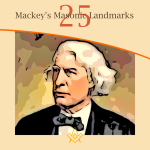 "The first great duty, not only of every lodge, but of every Mason, is to see that the landmarks of the Order shall never be impaired." — Albert Mackey (1856) |
 It is common knowledge that the ancient wages of a Fellowcraft Mason consisted of corn, wine, and oil. |
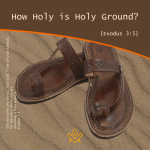 “Do not come any closer,” God said. “Take off your sandals, for the place where you are standing is holy ground.” Exodus 3:5 |
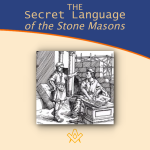 The Secret Language of the Stone Masons We know of Masons' Marks but lesser known are the 'argots' used by the artisans - in part 2 of a series on the social history of the Operative Masons we learn how the use of secret languages added to the mystery of the Guilds. |
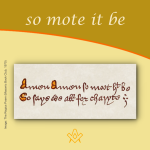 The phrase appears in the Regius Poem. It is customary in contemporary English to end prayers with a hearty “Amen,” a word meaning “So be it.” It is a Latin word derived from the Hebrew word - Short Talk Bulletin - Vol. V June, 1927, No.6 |
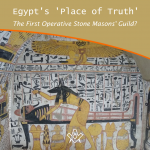 Egypt's 'Place of Truth' - The First Operative Stone Masons' Guild? Was ancient Egypt's 'village of the artisans' the first operative stone masons' guild? And was their use of 'identity marks' a forerunner of the Mason's Marks of the cathedral builders of the Middle Ages? Read on for some possible answers… |
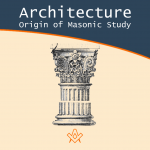 The Pieces of Architecture and the Origin of Masonic Study Discover the journey of the Apprentice – from Operative to Speculative. This journey has been carried out since the times of operative Freemasonry but today the initiate works in the construction of his inner temple. |
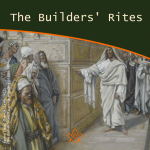 The Builders' Rites - laying the foundations operatively and speculatively The cornerstone (also ‘foundation’ or ‘setting’ stone) is the first stone to be set in the construction of the foundations of a building; every other stone is set in reference to this. |
 Applying the working tools to achieve our peculiar system of morality. |
 We take an in-depth look at the 47th Proposition of the 1st Book of Euclid as part of the jewel of the Past Master. |
 The Cable Tow: Its Origins, Symbolism, & Significance for Freemasons - Unbinding the significance of the cable tow. |
 We examine at one of the most impressive moments of the initiatory ceremony, a certain rite known as Circumambulation, and ask what is its meaning and purpose ? |
 So, what is the Level? And why do we use it in Freemasonry? |
 What is the mysterious pigpen or Masonic cipher that has been used for centuries to hide secrets and rituals? |
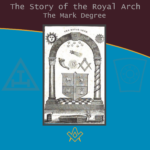 The Story of the Royal Arch - The Mark Degree Extracted from William Harvey's 'The Story of the Royal Arch' - Part 1 describes the Mark Degree, including the Working Tools. |
 Ashlars - Rough, Smooth - Story of a Stone How we can apply the rough and smooth Ashlars with-in a masonic context |
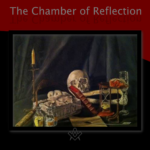 A detailed look at the Chamber of Reflection: A Revitalized and Misunderstood Masonic Practice. |
 Exploring the origin and symbolism of Faith, Hope and Charity |
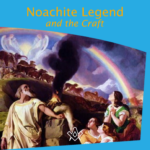 The Noachite Legend and the Craft What is it to be a true Noachidae, and what is the Noachite Legend and the Craft ? |
 In Masonic rituals, Jacob’s ladder is understood as a stairway, a passage from this world to the Heavens. |
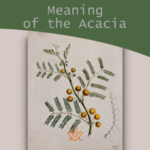 What is the meaning of the Acacia and where did it originate ? |
 What is the connection with the Feasts of St John and Freemasonry |
 The Forget-Me-Not and the Poppy - two symbols to remind us to 'never forget' those who died during the two World Wars. |
 Biblical history surrounding the two pillars that stood at the entrance to King Solomon's Temple |
 Is there a direct link between Judaism and Freemasonry? |
 The symbolism of the beehive in Masonry and its association with omphalos stones and the sacred feminine. |
 The Wages of an Entered Apprentice |
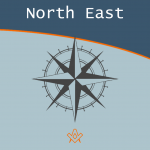 An explanation of the North East corner charge which explores beyond one meaning Charity - |
 A brief look at the origins of the two headed eagle, probably the most ornamental and most ostentatious feature of the Supreme Council 33rd Degree Ancient and Accepted (Scottish ) Rite |
 A Muslim is reminded of his universal duties just as a Freemason. A Masonic Interpretation of the Quran's First Two Chapters |
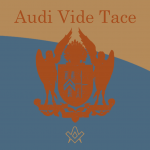 The three Latin words -{Listen, Observe, Be Silent}. A good moto for the wise freemason |
masonic knowledge
to be a better citizen of the world
share the square with two brothers

click image to open email app on mobile device
